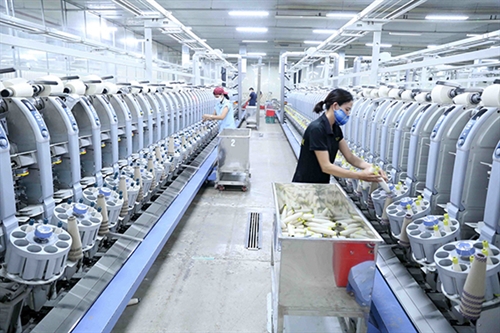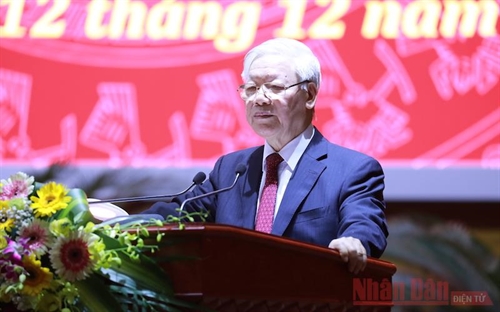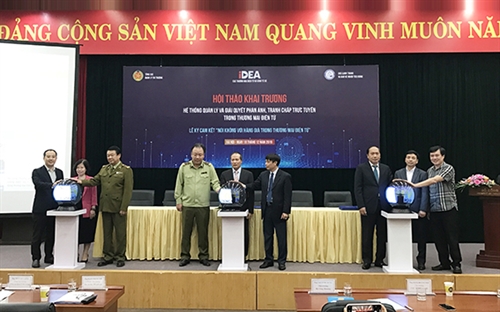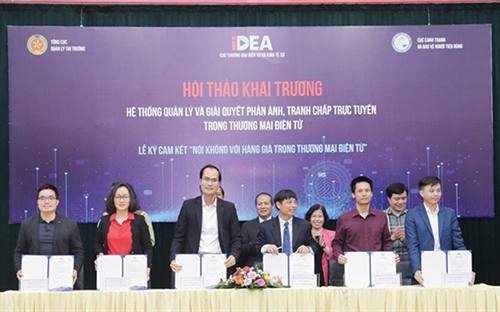In an economy, the fact that an enterprise or a group of enterprises has a dominant market position will result in competition restriction, and when there is an enterprise having a monopoly position, elimination of competition is likely to happen. The State, thus, needs to develop a mechanism to control the processes that lead to the formation of enterprises or groups of enterprises with a dominant market position, especially cross-border M&A. In Vietnam, the State’s control mechanism for these transactions was established in the 2018 Law on Competition and its guiding text, Government Decree 35/2020/ND-CP. In this article, the author overviews cross-border M&A in Vietnam, thereby, analyzing and commenting on Vietnam’s new regulations governing this issue, and making some suggestions for legislators in the future.
Tran Thu Yen
Faculty of International Trade and Business Law
Hanoi Law University
An overview of cross-border M&A transactions
There has not been a unified legal concept for the term “merger and acquisition” (M&A). Nonetheless, despite various approaches and explanations to the matter, in general, simply speaking, it is just the same thing with different names. Accordingly, in principle, buying a company and acquiring a company share a common point, i.e., to create new values and to make the value of the new enterprise after the M&A transaction greater than the total current value of the two enterprises as when they were separate. Cross-border M&A should be understood as a form of direct investment where there is a merger or acquisition transaction between two companies, and such a transaction involves international elements, that is, a foreign investor purchases or acquires a domestic enterprise.
Nowadays, in the light of Vietnam’s active participation in bilateral and multilateral trade agreements, there has been significant development in cross-border M&A activities in Vietnam. Cross-border M&A now has become an effective capital mobilization channel, contributing to the diversity of investment attraction of Vietnam economy, intensifying renovation of growth models, restructuring the economy and diversifying forms of business ownership. Nevertheless, approximately 90 percent of the value of cross-border M&A transactions in Vietnam comes from M&A deals in which foreign enterprises invest or purchase shares in Vietnamese companies. Among foreign investors, Japan accounts for the majority of M&A activities in Vietnam, followed by the United States, Singapore and Thailand. The Japanese enter the Vietnam’s market mainly through M&A channels, instead of direct capital investment, in many sectors such as food and beverage, consumer goods, banking, securities, mobile telecommunications and insurance[1]. In Vietnam, according to the 2020 statistics of the Foreign Investment Agency under the Ministry of Planning and Investment[2], as of November 20, 2020, the total value of newly registered, adjusted and contributed capital for the purchase of shares by foreign investors reached USD 26.43 billion, equaling 83.1 percent over the same period of 2019. Implemented capital of foreign direct investment (FDI) projects is estimated at USD 17.2 billion, equaling 97.6 percent over the same period of 2019. The accumulated implemented capital of FDI projects is approximately USD 229.1 billion, equaling 59.8 percent of the total valid registered investment capital. Foreign investors have invested in 19 sectors, some of which are typically attractive to foreign investment, such as the processing and manufacturing industry[3]; power production and distribution[4]; real estate business and wholesale and retail[5]. In the middle of COVID pandemic situation, the global foreign investment capital has dropped by 40 percent, the total foreign capital invested in Vietnam also decreased by 25 percent compared to the same period in 2019, yet the total registered investment capital for expansion of investment has increased by 10.6 percent compared to the figures of 2019[6]. However, Vietnam’s economic growth rate in 2020 reached 2.9 percent regardless of the dramatic impact of the pandemic and climate change on economic activities, which makes Vietnam become a strong competitor in the value chain transformation in Asia. Economists thus are strongly optimistic about the investment attraction outlook of Vietnam in 2021[7]. Many experts believe that the total registered and direct investment capital in Vietnam in 2021 will exceed USD 28.5 billion (for registered capital) and USD 19.98 billion (for implemented capital).
Consequentially, in the context of global investment shifting trends, Vietnam has been and is considered an attractive and fascinating destination by many economic institutions and big international corporations due to its political stability, macroeconomics, geographical advantages, environment and human resources conditions, etc. However, always opportunities come with risks and challenges. In this case, when the market is wide open while domestic investment resources remain limited, local enterprises will be possibly acquired by foreign investors at a low price. This situation prompts the need to devise an effective mechanism to control the processes that lead to the formation of enterprises or groups of enterprises with a dominant market position in general and cross-border M&A in particular.
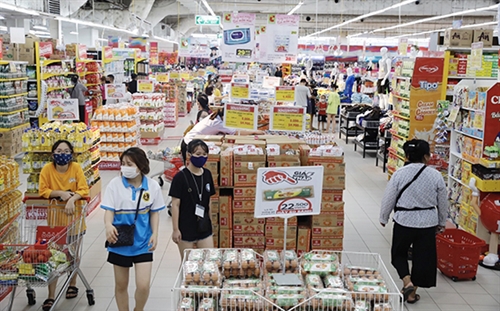 |
| A corner of BigC Thang Long, a member of BigC Vietnam supermarket chain which was acquired by the Thai Central Group from the French Casino Group in 2016__Photo: Tran Viet/VNA |
Some new points of the 2008 Law on Competition regarding M&A transactions
Subject of M&A activities
Article 2.1 of the 2018 Law on Competition (the 2018 Law) stipulates that entities subject to competition law are business organizations and individuals. However, considering M&A activities specified in Chapter V of this Law, it could be seen that entities eligible for M&A activities can only be enterprises (in accordance with the Law on Enterprises) or cooperatives, not business households. Accordingly, economic concentration can be distinguished from investment in different enterprises by individuals - an investment activity that will not be considered an M&A activity and not subject to the competition law.
Previously, the 2004 Law on Competition (the 2004 Law) only controlled M&A activities of enterprises operating in the same market. This regulation, while regulating horizontal M&A, generally overlooked vertical M&A and conglomerate M&A. As such, the 2018 Law has broadened the scope of control of M&A transactions to ensure comprehensive control over M&A transactions performed by enterprises having relationships in the production, distribution, and supply chains for a certain type of goods or services, or enterprises having the business lines that are inputs of or complement one another. Subsequently, the forms of M&A regulated are widened to cover vertical and conglomerate M&A, instead of just vertical M&A as before.
Scope of region to conduct M&A activities
The scope of competition previously only bounds M&A transactions performed in the territory of Vietnam. But many competition cases carried out outside the territory of Vietnam have a certain impact on the Vietnam market, for example, price-fixing agreements. In order to limit possible negative effects, the governing scope of the 2018 Law includes M&A acts performed outside the territory of Vietnam but having or being likely to have a competition-restraining impact on the Vietnamese market. This has created a legal corridor to investigate and comprehensively handle all M&A acts that have or are likely to have a competition-restraining impact on the domestic market.
The expansion of the governing scope also helps to create a legal basis for Vietnam’s competition authorities to cooperate with competition authorities of other countries and territories around the world in the process of investigating and handling M&A cases, facilitating the implementation of competition commitments that Vietnam has made in trade agreements.
Forms of M&A transactions
As per current competition regulations, M&A transactions are classified into four categories: (i) economic concentration provided in Article 29 of this Law, (ii) merger or consolidation of enterprises, (iii) acquisition of an enterprise, and (iv) joint venture between enterprises. A transaction will be considered a merger of enterprises when one or more than one enterprise transfers all its/their lawful assets, rights, obligations and interests to another enterprise, and at the same time, terminates its/their business operation or existence. Consolidation of enterprises occurs when two or more enterprises transfer all their lawful assets, rights, obligations and interests to form a new enterprise, and at the same time, terminate their business operation or existence. Acquisition of an enterprise means the direct or indirect purchase of all or part of the contributed capital or assets of another enterprise by an enterprise, sufficiently to control and govern the acquired enterprise or any of its trades or business lines. Therefore, merger, consolidation or acquisition of enterprises is prohibited in case it results in a combined market share of enterprises participating in the economic concentration, causing negative effects or potentially significant competition-restraining impact on the domestic market (Article 30). Meanwhile, joint venture between enterprises is defined as a case when two or more enterprises together contribute a portion of their lawful assets, rights, obligations and interests to form a new enterprise (Article 29.5). Under this regulation, joint venture is deemed a form of economic concentration, similar to the regulations of the French Republic and European Union on economic concentration[8].
M&A notification threshold
The threshold requiring notification of economic concentration in general and the threshold for notification of mergers and acquisitions of enterprises in particular are the legal thresholds for enterprises and competition authorities to determine which merger and acquisition transactions are subject to advanced notification. This regulation is the one that most clearly demonstrates the precheck mechanism in controlling cross-border M&A transactions in Vietnam.
Accordingly, the competition management authority, which is the National Competition Committee (NCC)[9], controls one or several aspect(s) of enterprises before they proceed with the M&A procedures. Only after enterprises have fully carried out the law-prescribed procedures and the NCC has conducted investigation, assessment and allowed enterprises to conduct M&A transactions, may enterprises be allowed to realize their transactions. Any act of business merger and acquisition without a notification in the case of a notification threshold or before the approval of the NCC or ahead of the schedule prescribed by the competition law is a violation of the law. Such merger and acquisition transaction will be considered invalid by the competition management authority and will be administratively sanctioned[10].
Vietnam’s laws as well as the laws of many countries around the world use certain criteria to determine the notification threshold of a merger and acquisition transaction. Under the 2004 Law, the notification threshold of economic concentration in general and business mergers and acquisitions in particular were determined based on a single criterion that is the combined market share of the enterprises participating in the merger and acquisition transaction. After more than 10 years’ implementation, this regulation has shown many shortcomings. Under Article 20 of the 2004 Law, if the enterprises participating in an M&A transaction have a combined market share of between 30 percent and 50 percent in the relevant market, they must notify the NCC before proceeding with an economic concentration. This provision excludes the obligation to notify in respect of M&A transactions in which participating enterprises have a combined market share of under 30 percent in the relevant market. In practice, there have been many M&A transactions in which participating enterprises have a combined market share of under 30 percent but still exert a negative impact on the competitive environment. On the contrary, there are also business fields with negligible barriers to market entry, and M&A transactions in which participating enterprises have a combined market share of over 30 percent; there is, nonetheless, not enough market power to create a competition-restraining impact. To address the above limitations, the 2018 Law contains more detailed provisions, covering all M&A cases that potentially have a significant competition-restraining impact on the competitive environment. In particular, according to the 2018 Law, the notification threshold for business mergers and acquisitions is determined by the following criteria:
(i) Total assets in the market of Vietnam of enterprises participating in the M&A transaction;
(ii) Total turnover in the market of Vietnam of enterprises participating in the M&A transaction;
(iii) Value of the M&A transaction; and,
(iv) Combined market share in the relevant market of enterprises participating in the M&A transaction.
These criteria are further addressed in Article 13 of Government Decree 35 of 2020 - the guiding text of the Law, specifically:
(i) Total assets in the market of Vietnam of enterprise or group of affiliated enterprises of which such enterprise is a member was VND 3 trillion or more in the financial year immediately preceding the year of the proposed implementation of the M&A;
(ii) Total sale turnover or input purchase turnover in the market of Vietnam of the enterprise or group of affiliated enterprises of which the enterprise is a member was VND 3 trillion or more in the financial year immediately preceding the year of the proposed implementation of the M&A;
(iii) Transaction value of the business M&A is one VND 1 trillion or more;
(iv) Combined market share of enterprises proposing to participate in the M&A was 20 percent or more in the relevant market in the financial year immediately preceding the year of the proposed implementation of the M&A.
Thus, the 2018 Law has managed to develop more detailed provisions on the notification threshold with more specific criteria so as to avoid missing out on M&A transactions potentially having a considerable competition-restraining impact, and create a legal basis for the competition management authority to control cross-border mergers and acquisitions more effectively.
Some recommendations
The 2018 Law and Government Decree 35/2020/ND-CP, on the one hand, provide many regulations governing M&A transactions but, on the other hand, somewhat cause difficulties for at least two following cases:[11]
(i) The buyer participates in the auction of shares in an enterprise when the State withdraws capital, upon which the notification threshold for economic concentration is met. In the case, the buyer has to bear expenses for performing the notification obligation while being unsure about whether they win the auction or not. In addition, the applicable law is seemingly unprepared for the case where the buyer wins the auction but is subject to a prohibited economic concentration.
(ii) The time limit for appraisal of an economic concentration may exceed the maximum time limit for the buyer to make a public offer to purchase. The law is also silent about whether the buyer may withdraw the public offer to purchase in case the economic concentration is prohibited.
One of the criteria to identify an M&A transaction as an “acquisition” is whether the acquiring enterprise can control and govern the target company with the right to decide on senior personnel, make amendments to the charter and make decisions on important issues in the business activities of the target company (Article 29 of the 2018 Law and Article 2 of Decree 35/2020/ND-CP). Thus, the veto right (acquired by shareholder agreements, by the company’s charter, or by the law based on the ownership ratio and voting rate) cannot be the right to control and govern, as it is not the capacity to “decided” on a specific issue. The reason is that a veto right is a right that can only be exercised passively, not actively as decided by the will of the right holder. Nevertheless, in reality, it seems that the NCC still considers the buyer’s veto right over said issues as the capacity of the buyer to control and govern the target company. Since this interpretation does not adhere to the language of the law and it seems that, on a case-by-case basis, the enterprises cannot be sure whether the transaction is an acquisition. As a result, enterprises will have to further consult the NCC and this may prolong the transaction time and increase transaction costs.
Furthermore, even considering the veto right as a right to control and govern when deciding whether the transaction is an acquisition, this criterion should not be used to determine whether the enterprises are of one group of affiliated enterprises. Nevertheless, the competition management authority should soon clarify its position on this matter formally, publicly and consistently.
On that account, the criteria of transaction value and assets or sale turnover of the enterprises should be evaluated together. Regarding the market share criterion, the notification threshold of market share for economic concentration may cause unwanted troubles and lengthy procedures for the enterprises because it requires the determination of the enterprises’ market share in the relevant market in order to see whether the M&A deal is subject to notification to the state agency. This can cause a waste of time and budget because it also involves investigating other enterprises to determine the market share and the relevant market, especially when the acquiring enterprise is a foreign company. Therefore, it is recommended to consider removing the criterion of total market share of the enterprises participating in an economic concentration and only requiring the enterprises to make a notification when they simultaneously meet the criteria of transaction value, assets and sale turnover of the enterprises.
Another issue lays in the authority regulating M&A activities. Under of the 2018 Law, the control of economic concentration in general and M&A deals in particular is assigned to the NCC which, yet, has not been established as of today. Consequentially, the control of M&A transactions in Vietnam is administered by the Vietnam Competition and Consumer Authority[12]. It is suggested that Vietnam should learn from competition authority models of other countries in the world. Accordingly, Vietnam should not set up an independent competition agency separately from the cabinet. The reason is that because the independence of the competition authority is greatly influenced by political factors. Even for an independent competition authority, political support is highly important. Without it, the competition authority, no matter how independent, can hardly play its full role. Thus, an effective competition authority of Vietnam must be cohesive with the state organizational structure. In addition, the competition authority should not be defined as an agency directly under the Ministry of Industry and Trade, because the enforcement agency under the Ministry of Industry and Trade may lead to low effectiveness in handling violations of the competition law when these acts are related to enterprises managed by the Ministry[13]. The competition authority is recommended to be formed as a ministerial-level agency directly under the Government. This model is compatible with the organizational structure of Vietnam’s state apparatus while creating relative independence for the competition authority, ensuring accountability of the competition authority.-


